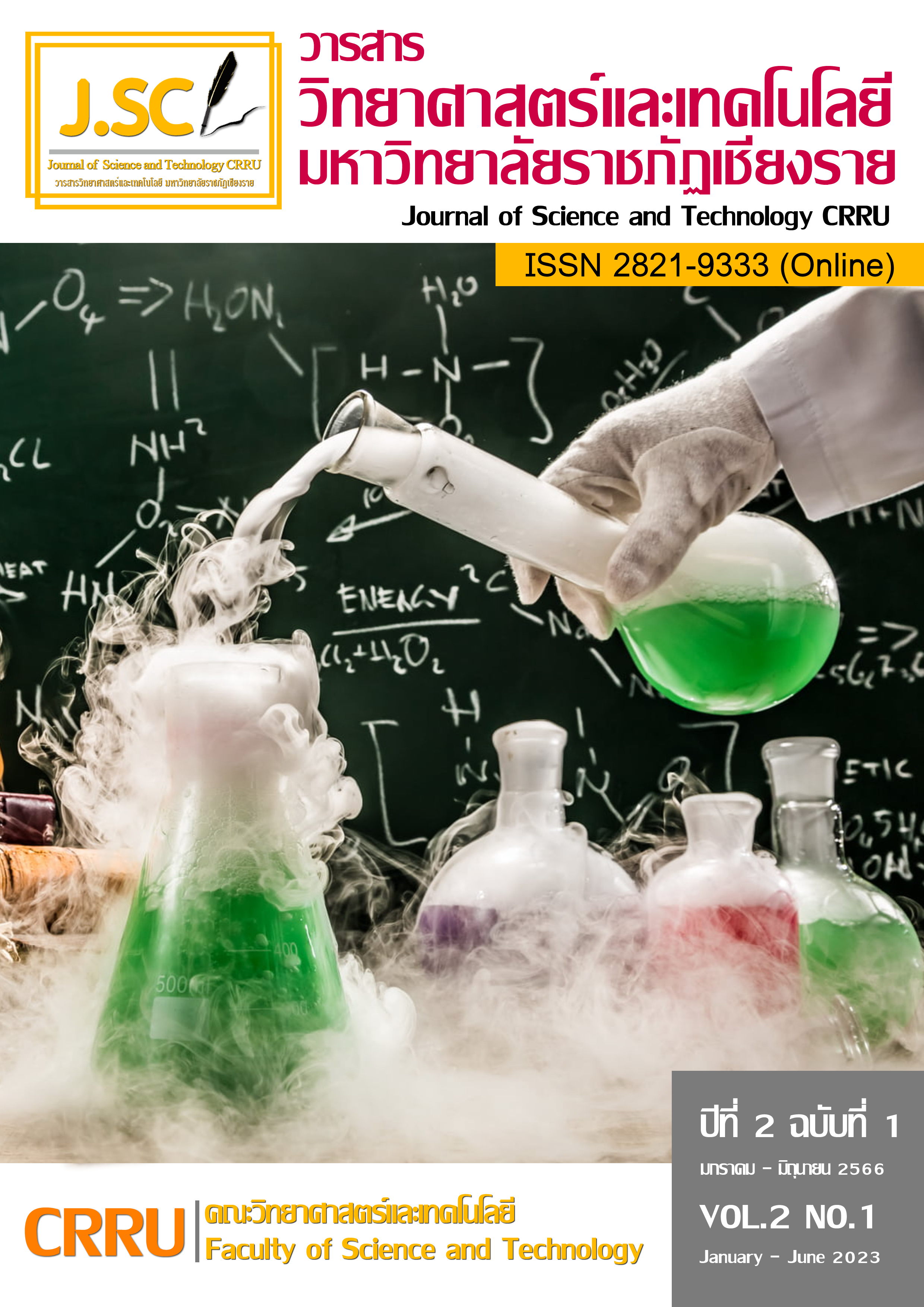Development of Pickled Fish Papaya Salad Sauce Product
Main Article Content
Abstract
This research aimed to 1) Select a suitable formula of fermented fish sauce to use as an ingredient in pickled fish papaya salad sauce product. 2) Study and develop a suitable formula of pickled fish papaya salad sauce product. 3) Study the physical, chemical, microorganism and sensory qualities of pickled fish papaya salad sauce product. It was found that the suitable fermented fish sauce used pickled gouramis fish, white popinac, pineapple, picked garlic juice, shrimp paste, palm sugar, MSG, and water were 36.70, 5.50, 9.17, 3.66, 5.50, 1.83, 37.64, and 0.6 gram, respectively. The suitable formula of pickled fish papaya salad sauce product used fermented fish sauce, dried chili, garlic, palm sugar, fish sauce, lemon juice, and water were 11.82, 9.09, 7.45, 11.82, 20.45, 21.18, and 18.18 grams, respectively. The developed product has physical characteristics of L*, a*and b* were 17.211.21, 18.980.83 and 23.261.32, respectively, viscosity 236.033.23 cp and total soluble solid was 59.820.09 Brix. The chemical characteristics of pH and total acidity were 3.27±0.01 and 0.01±0.02 percentages, respectively. The sensory characteristic of appearance, color, odor, taste and overall liking from 100 consumers between the ages of 18 – 60 were 8.83±0.23, 8.76±0.69, 8.89±0.88, 8.97±0.56 and 8.89±0.86 scores, respectively. The microorganism qualities of total plate count were 2x102 cfu/g, yeast and mold were 1x102 cfu/g. It was shown that were below than the Thai Community product standard 1954/2557.
Article Details

This work is licensed under a Creative Commons Attribution-NonCommercial-NoDerivatives 4.0 International License.
Journal of TCI is licensed under a Creative Commons Attribution-NonCommercial-NoDerivatives 4.0 International (CC BY-NC-ND 4.0)
References
ปวริศา สิทธิสาร. (2552). การทำปลาร้า. พระนครศรีอยุธยา: สำนักงานวัฒนธรรม จังหวัดพระนครศรีอยุธยา.
ปัญจภรณ์ ทัดพิชญางกูร. (2554). การสำรวจเพื่อพัฒนากระบวนการผลิตอาหารหมักพื้นบ้านในจังหวัดอุบลราชธานี. อุบลราชธานี : คณะเกษตรศาสตร์ มหาวิทยาลัยอุบลราชธานี.
พิกุลทอง อัฐนาค และลำไย ไชยเสน. (2545). การวิเคราะห์หาปริมาณแคลเซียม ฟอสฟอรัสและโปรตีนใน ปลาร้า. มหาสารคาม: โครงการวิจัยปริญญาวิทยาศาสตรบัณฑิต คณะวิทยาศาสตร์และเทคโนโลยีมหาวิทยาลัยราชภัฏมหาสารคาม.
ชลิญญา สุดา. (2563). การใช้ใบห่อที่ล่าทดแทนผงชูรสในการผลิตน้ำปลาร้าปรุงรสสำเร็จรูป. เชียงใหม่: คณะเทคโนโลยีการประมงและทรัพยากรทางน้ำมหาวิทยาลัยแม่โจ้.
จริยา สุขจันทรา. (2561). การยืดอายุการเก็บรักษาน้ำบูดูผสมโดยวิธีการพาสเจอร์ไรส์. ยะลา: สาขาวิทยาศาสตร์ และเทคโนโลยีการอาหาร คณะวิทยาศาสตร์เทคโนโลยีและการเกษตร มหาวิทยาลัยราชภัฏยะลา.
นฤมล ปัญญาวชิโรภาส. (2542). ส้มตำ. เลย: สาขาการพัฒนาชุมชน คณะมนุษยศาสตร์และสังคมศาสตร์ มหาวิทยาลัยราชภัฏเลย.
วินิธา พานิชย์. (2564). แนวทางในการสร้างมูลค่าเพิ่มผลิตภัณฑ์ปลาร้าของหมู่บ้านท่องเที่ยวริมหนอาหารจังหวัดสกลนคร. สกลนคร: คณะมนุษยศาสตร์และสังคมศาสตร์ มหาวิทยาลัยราชภัฏสกลนคร.
อุไรพร จิตต์แจ้ง (2561). การพัฒนาคุณภาพปลาร้าและผลิตภัณฑ์ปลาร้าทางเลือกตามภูมิปัญญาท้องถิ่น. อุบลราชธานี: สำนักงานเกษตรอำเภอ อำเภอเมือง.
ไพโรจน์ วิริยจารี (2545). การประเมินทางประสาทสัมผัส. สาขาวิชาเทคโนโลยีการพัฒนาผลิตภัณฑ์. คณะอุตสาหกรรมการเกษตร, มหาวิทยาลัยเชียงใหม่.
ไพโรจน์ วิริยจารี. (2555). การออกแบบการทดลอง (พิมพ์ครั้งที่ 2). เชียงใหม่: สาขาวิชาเทคโนโลยีการพัฒนาผลิตภัณฑ์ คณะอุตสาหกรรมการเกษตร มหาวิทยาลัยเชียงใหม่.


